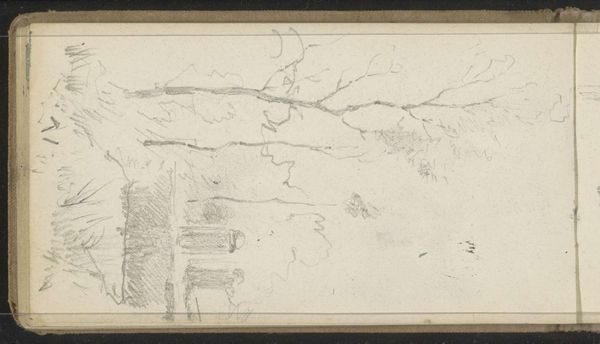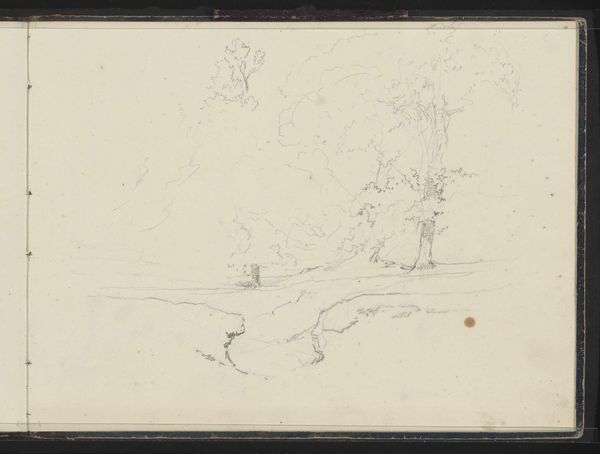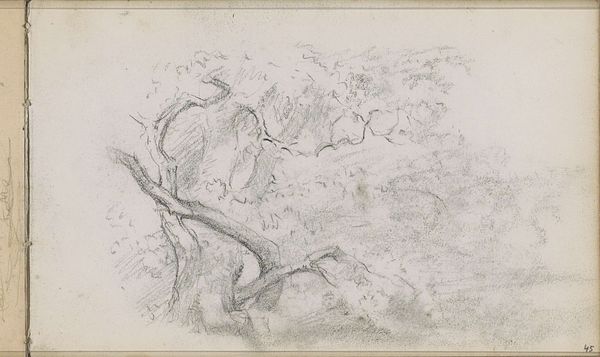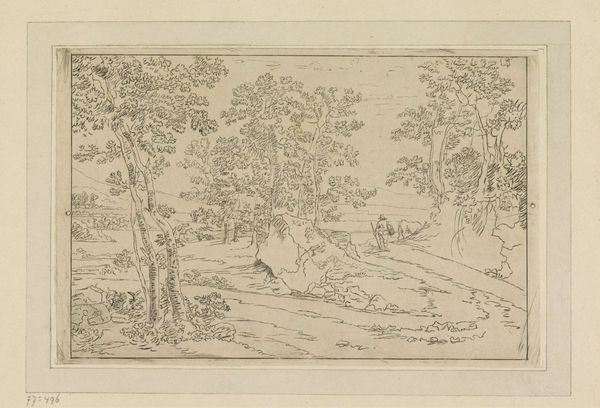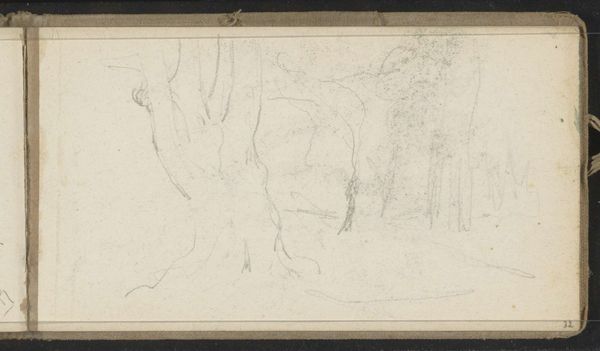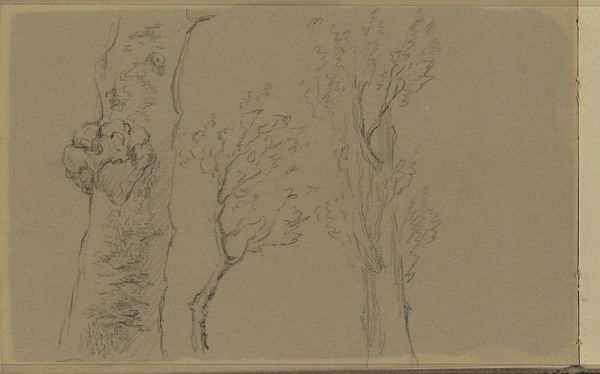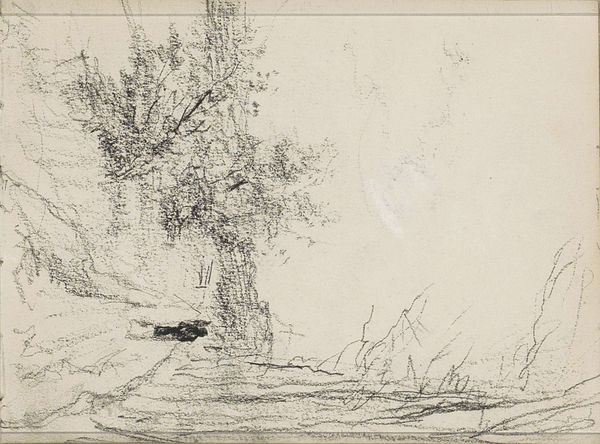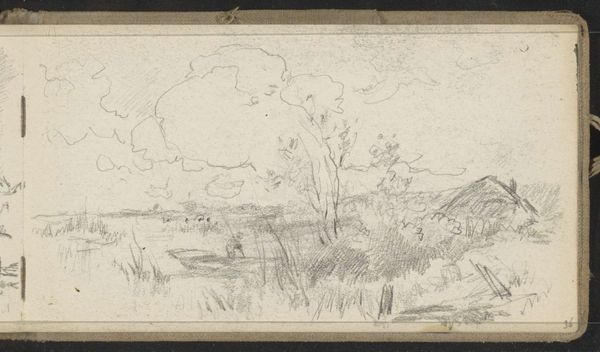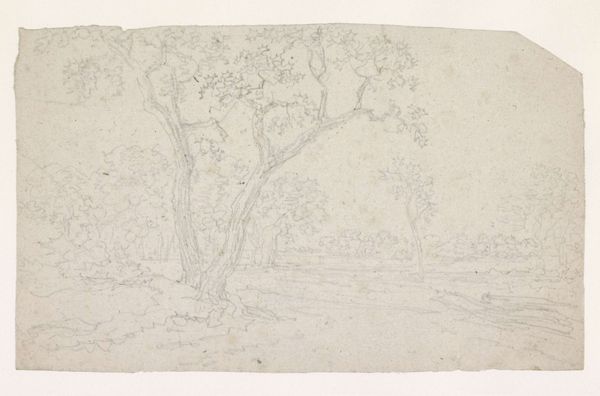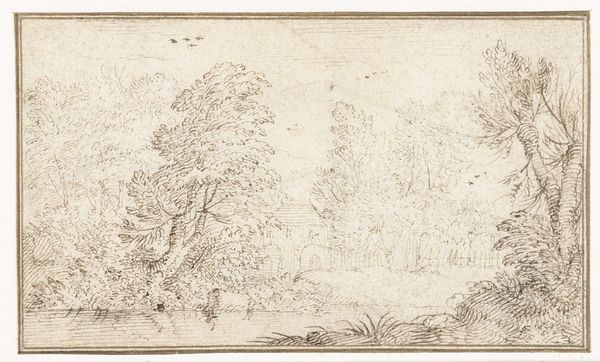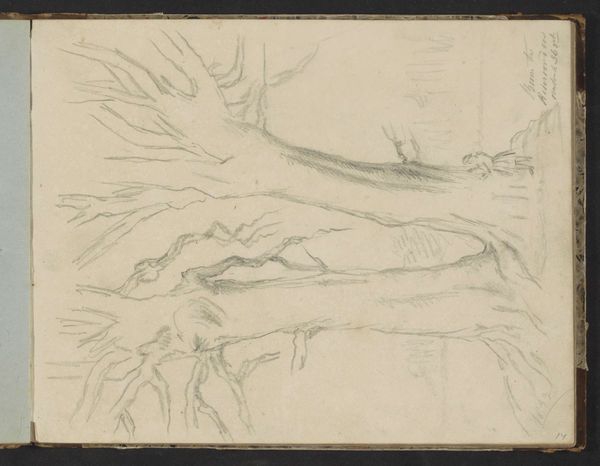
Dimensions: height 104 mm, width 179 mm
Copyright: Rijks Museum: Open Domain
Willem Cornelis Rip made this pencil drawing of a Dutch dune landscape, presumably en plein air, sometime around the turn of the 20th century. The Netherlands has a fascinating and unique social history, and Dutch landscape art provides a window onto its changing values and priorities. From the 17th-century Golden Age, we see artists responding to the unique geography of the low countries. The Dutch Republic was fiercely proud of its landscape and its independence, and artists like Jacob van Ruisdael captured this. By the 19th century, artists like Rip were using landscape to express a different set of values. Industrialization and urbanization were changing the Netherlands rapidly, and the dunes became a place of retreat. To understand this drawing more fully, we could research the changing social and economic conditions of the Netherlands at the time, as well as the art market and the institutions that supported landscape painting. In doing so, we come to appreciate how even a seemingly simple sketch can be deeply embedded in its social and institutional context.
Comments
No comments
Be the first to comment and join the conversation on the ultimate creative platform.
